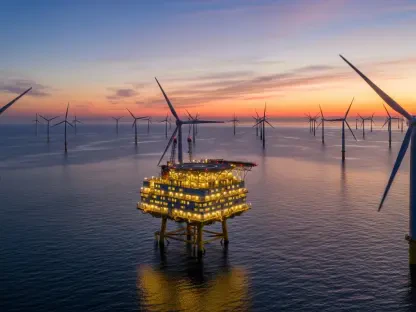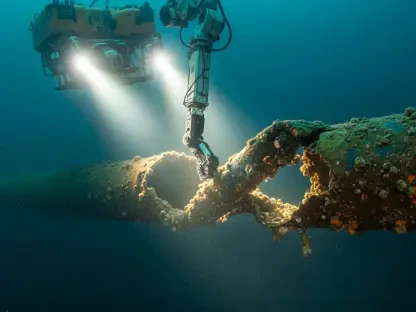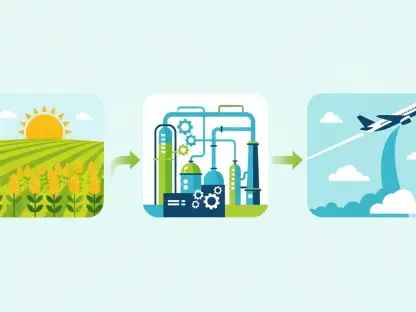Canada is demonstrating a steadfast commitment to combatting climate change through the development of cutting-edge carbon capture, storage, and transportation technologies. This dedication is exemplified by a significant investment exceeding $9.5 million into six pioneering carbon management projects. This strategic funding, part of the Carbon Capture, Utilization, and Storage (CCUS) research, development, and demonstration (RD&D) initiative, seeks to drive technological advancements that offer both environmental and economic advantages. By focusing on novel methods to reduce carbon emissions and enhance carbon storage, Canada aims to position itself as a global leader in the realm of low-cost, permanent carbon removal solutions.
Transformative Projects and Strategic Investments
One of the most noteworthy allocations within this funding initiative, amounting to $3.5 million, is directed toward Enbridge Gas Inc.’s comprehensive evaluation of CO2 storage potential in Ontario’s Cambrian saline reservoir. This foundational endeavor will serve as a critical step in establishing CO2 hubs within the region, positioning it as a prime site for large-scale carbon sequestration. Daniel Kelter of Carbon Removal Canada emphasizes the long-term benefits of this investment for a diverse range of stakeholders, including engineers and truck drivers. He underscores the pivotal role such initiatives play in fortifying Canada’s status in the field of carbon removal technologies.
Another significant recipient of the funds is Canada Nickel Company, awarded over $2 million to pilot their innovative in-process tailings carbonation technology. This breakthrough technique utilizes ultramafic tailings, a byproduct of nickel mining, to achieve stable CO2 sequestration. The potential impact of this method is substantial, with the capacity to sequester millions of tons of CO2 each year. This project not only addresses the disposal of mining waste but also transforms it into a viable solution for long-term carbon storage, thereby exemplifying the dual environmental and economic benefits of CCUS technologies.
Academic and Industrial Collaborations
The University of Toronto’s Direct Air Capture (DAC) solution stands to benefit significantly from a $1.7 million investment aimed at enhancing its pH-swing and electrochemical capture technology. This advanced process focuses on capturing CO2 directly from the atmosphere and storing it efficiently. By refining these technologies, the University of Toronto aims to contribute significantly to global efforts in reducing atmospheric carbon levels. Such investments highlight the critical role that academic institutions play in spearheading innovative solutions to pressing environmental challenges.
Kemetco Research Inc. is set to receive $1.6 million to develop a large-scale CO2 sequestration technology that concurrently produces critical mineral reserves. This project stands as a testament to the potential of industrial partnerships in advancing carbon capture solutions while also addressing the need for valuable mineral resources. Meanwhile, Université Laval is slated to use approximately $422,830 for computational and experimental R&D of solid adsorbents for DAC technologies. These solid adsorbents offer a promising avenue for capturing and storing CO2, adding to the multifaceted approach Canada is taking to address carbon emissions.
Enhancing CO2 Capture and Storage Technologies
In addition, the LOCUS Laboratory at Université de Sherbrooke will receive around $352,413 to improve cryogenic/expansion technology for a new supersonic CO2 capture process. This technology aims to enhance the efficiency and effectiveness of CO2 capture from various industrial processes, further contributing to the overall reduction of carbon emissions. By supporting such diverse and forward-thinking projects, Canada is fostering a robust ecosystem of innovation that integrates carbon removal technologies across multiple sectors, including forestry, agriculture, energy, and mining.
These investments collectively reflect a broader trend towards holistic climate solutions that bridge environmental sustainability with economic growth. Daniel Kelter notes that Canada’s strategic support for these initiatives not only bolsters domestic projects but also attracts international interest and investment. By showcasing Canada’s strengths in scientific and technological expertise, these projects pave the way for the country to become a prime destination for future climate solutions. The diverse range of funded projects highlights the interconnected nature of the challenge, requiring comprehensive strategies that harness natural resources and cutting-edge technology.
Navigating Towards a Sustainable Future
Canada is showing a strong commitment to addressing climate change by developing advanced carbon capture, storage, and transportation technologies. Their dedication is highlighted by an impressive investment of over $9.5 million in six innovative carbon management projects. This funding is part of the Carbon Capture, Utilization, and Storage (CCUS) research, development, and demonstration (RD&D) initiative. The goal is to propel technological progress that benefits both the environment and the economy. By concentrating on new methods to cut carbon emissions and improve carbon storage, Canada seeks to establish itself as a world leader in providing affordable, long-lasting carbon removal solutions. This approach not only boosts the fight against climate change but also positions Canada as a pivotal player on the global stage in terms of sustainable technologies. With these efforts, Canada is paving the way for a greener future with a focus on reducing the nation’s carbon footprint and fostering innovation in clean energy.
